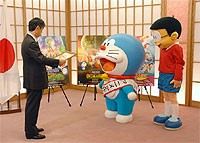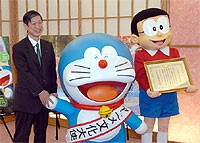By Attilya Binti Zainal
The term body shaming or also known as an appearance-related shame is coined quite recently and it is becoming the talk of the town as the social media is uprising. For as long as you have a body, the person is bound to be subjected to body shaming (‘This is…’, December 15,2018).). Body shaming refers to an action or practice of commenting, judging, criticizing, humiliating or teasing others for their physical appearance, especially their weight (National Association of Anorexia Nervosa and Associated Disorders, n.d) This occurs when the person did not appear to fit the societal standards of beauty as there is a specific ‘perfect’ figure that the person need to attain to be deemed acceptable in a society (‘This is…’, December 15,2018).
The idea of this ‘perfect’ body is so messed up because you could still be punished with harsh words if you are too skinny or too plump for the standard. And what’s worse, not only the body dimensions were scrutinized, it also can go to the length where people can be humiliated for their facial features, skin colour, hairstyles, height as well as the way someone is dressing up (Carpino, 2017). Thus, this has reflected in the way they are being treated in their everyday life including less job opportunities, less payment and others (Burnett, 2016). Therefore, it is crystal clear that body shaming is a form of bullying which may lower down the esteem of the victims.
Due to the fact that the media has heavily portrayed certain beauty standards to the audience, it does make sense that that is the criteria they need to achieve to be socially accepted (Jarret, 2019). Human brains are uniquely functioned, they are wired to like familiarities. Hence, with the constant exposure of body ideals, it has molded the way people think and whatever they captured in the media is what they believed in (Jarrett, 2019). Thus, the acceptance of beauty standards. Consequently, this has made those without the standard, especially the overweight ones to become a subject of jokes in the media.
Little did people know that the constant negative comments thrown to the victims has beaten them up emotionally and physically. There is evidence from the National Health and Morbidity Survey 2015 (Ministry of Health, 2019) that illustrated one out of two Malaysian is obese which brings Malaysia to one of the healthiest nation in Asia. Not only that, two thirds of adults in England were classified overweight in 2017. Meanwhile, according to the National Center for Health Statistics in United States, 70% of the adults is considered obese (‘Does fat…’, September 17,2019). Although the statistics look very worrying, that does not give the tickets to others to simply body shame those with overweight body with such nasty words.
Many people think that body shaming someone is a way of motivating the victims to shed some fats off their body (‘Does fat…’, September 17,2019). Interestingly, proof revealed that body shaming and weight discrimination made things worse and it will only lead to self-destructive behaviour (Sullivan, 2019). He added, the victims might feel ashamed of themselves and lead them to depression, anxiety and eating disorders. In addition, one of the body shaming victims said in an article (‘Does fat…’, September 17,2019). that the downgrading criticisms only made her eat more as that the only thing that makes her feel better. It seems like body shaming someone only create more problems.
There are many instances whereby people condemning others due to their physical appearances. For instance, Zaihani Zain, a well-known Malaysian fashion critic once body shamed someone for making her feeling uncomfortable during a catwalk shows she attended (Petter, 2018). She mentioned in her statement on Twitter that whoever weighing more than 60kg should not attend any fashion show event as their thighs are spilling over and disturbed the comfort of people sitting next to them. However, she received a huge backlash from Malaysian as well as other fashion critics for her insensitive comments.
Why body shaming is a crime? According to Ministry of Health Malaysia, body shaming is an act of bullying whereby it may marks a negative effect towards the victims such as emotional stress, loss of self-confidence, loss of appetite, depression and worse, may lead to suicidal thoughts (Yeap, 2019). Malaysia has finally stepped up their game to increase mental health awareness through criminalizing the offenders with fines up to RM50, 000 or imprisonment up to a year under section 233 (1) (b) Communication and Multimedia Act 1998. Therefore, with this initiative by the authorities, hope that people will be more sensitive to their words and mental health issues can be curbed.
In conclusion, know that people come in different shapes and sizes. Everyone is uniquely beautiful in their own way regardless their appearance. Be wise in choosing your words as it has the biggest power to influence others. Rather than using it to degrading others, people should turn it over with positive and uplifting criticisms. Hence, people will be happier and healthier.
References
Burnett, D. (2016, March 11). A big fat shame: the problems with criticising someone’s weight. The Guardian. Retrieved from https://www.theguardian.com/science/brain-flapping/2016/mar/11/big-fat-shame-obesity-media-biology-shaming
Carpino, T. L. (2017). Young Women’s Perceptions and Experiences of Skinny and Fat Shaming (Doctoral dissertation, Carleton University).
Does fat shaming help people lose weight? (2019, September 17). BBC News. Retrieved from https://www.bbc.com/news/health-49714697
Jarrett, J. (2019, March 21). Words Have Power: Can they lead to an eating disorder? Magnolia Creek. Retrieved from https://www.magnolia-creek.com/eating-disorder-recovery-blog/what-is-body-shaming/
Ministry of Health (2019, April). Retrieved from http://www.moh.gov.my/moh/resources/Buletin%20KKM/2019/E%20BULETIN%20APRIL%202019/files/basic-html/page8.html
National Association of Anorexia Nervosa and Associated Disorders (n.d.). Retrieved from https://anad.org/education-and-awareness/body-image/body-image-articles/body-shaming/
Petter, O. (2018, April 18). Fashion Critic Suggests People Weighing more than 60kg Should not Attend Catwalk Show. Independent. Retrieved from https://www.independent.co.uk/life-style/fashion/fashion-critic-weight-60kg-catwalk-shows-invitations-attendance-zaihani-mohd-zain-a8310586.html
Sullivan, B. (2019, September 17). Why Bill Maher is wrong about fat-shaming. The Conversation. Retrieved from http://theconversation.com/why-bill-maher-is-wrong-about-fat-shaming-123589
This is what body shaming is doing to your mental health: Why you should refrain from body shaming (2018, December 15). Times Now News. Retrieved from https://www.timesnownews.com/health/article/what-body-shaming-is-doing-to-your-mental-health-refrain-from-body-shaming/331436
Yeap, A, (2019, October 18). Body Shaming Is Now A Crime In M’sia, So Calling Someone Fat Online Could Land Bullies In Jail. Must Share News. Retrieved from https://mustsharenews.com/body-shaming-crime-malaysia/

